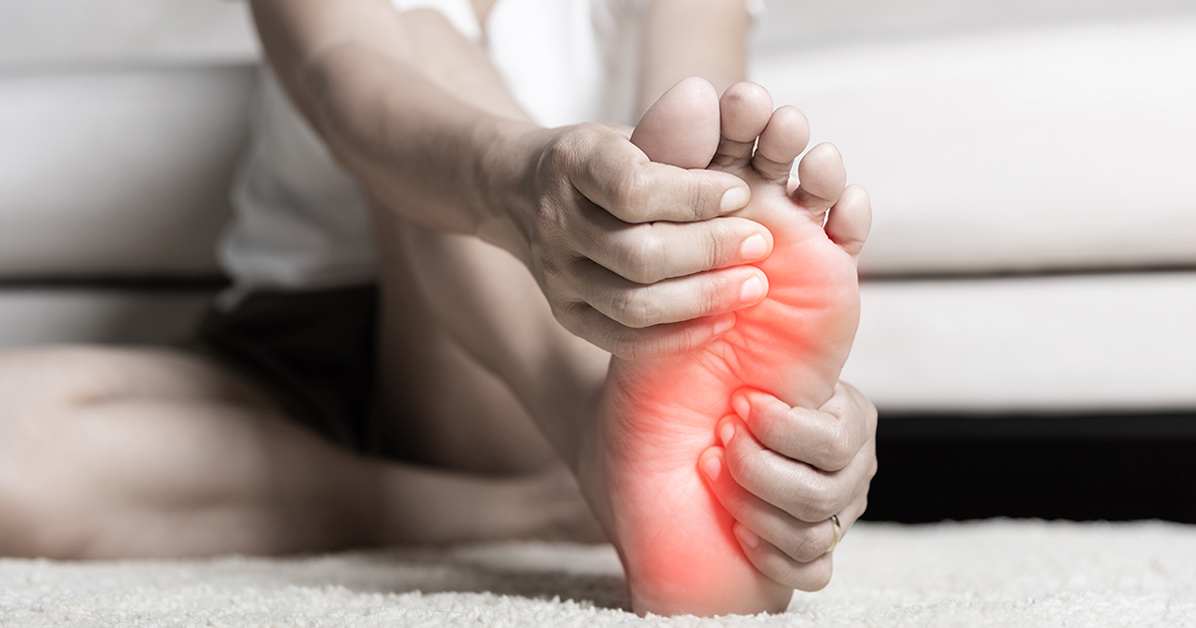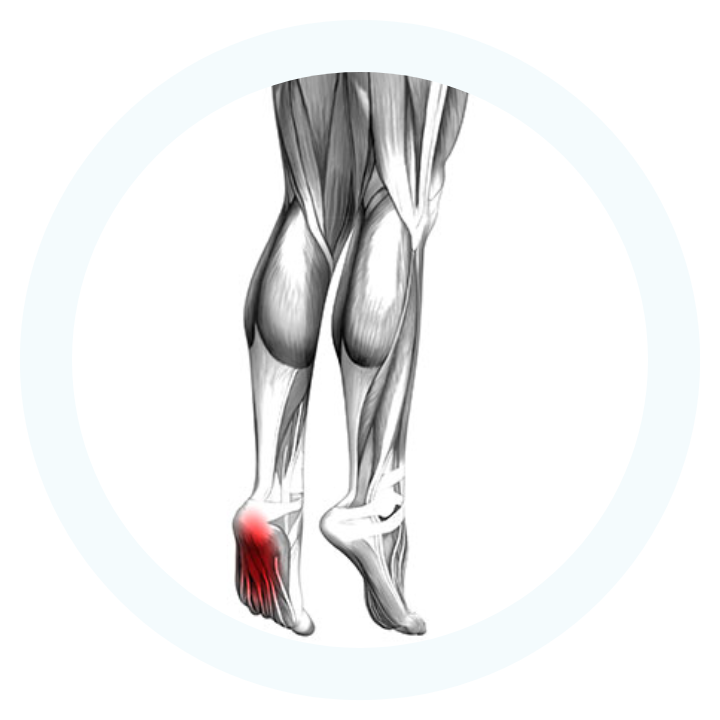Treatment for Ankle, Foot, and Toe Pain
In Texas


Common Causes of Ankle, Foot, and Toe Pain
- Osteoarthritis: Osteoarthritis in the ankle, foot, or toes occurs when the cartilage that cushions the joints wears away, leading to pain, stiffness, and decreased range of motion.
- Tendonitis: Tendonitis involves inflammation of the tendons around the ankle, foot, or toes, often due to overuse or repetitive movements. This can cause pain and tenderness.
- Bursitis: Bursitis is the inflammation of the bursae, small fluid-filled sacs that cushion the joints. This condition causes pain and tenderness, particularly with movement.
- Plantar Fasciitis: Plantar fasciitis is the inflammation of the plantar fascia, a thick band of tissue that runs along the bottom of the foot. This can cause sharp pain, especially in the heel, and is often worse in the morning.
- Achilles Tendonitis: Achilles tendonitis involves inflammation of the Achilles tendon, causing pain and stiffness in the back of the ankle and heel.
- Ankle Sprains: Ankle sprains occur when the ligaments supporting the ankle are stretched or torn, leading to pain, swelling, and instability.
- Stress Fractures: Stress fractures are small cracks in the bones of the ankle, foot, or toes, often caused by repetitive force or overuse. This leads to pain and swelling.
- Heel Spurs: Heel spurs are bony growths on the underside of the heel bone, often associated with plantar fasciitis. They can cause pain and discomfort, particularly with walking or standing.
- Gout: Gout is a form of arthritis caused by the accumulation of uric acid crystals in the joints, leading to sudden, severe pain, redness, and swelling, often affecting the big toe.
- Bunions: Bunions are bony bumps that form on the joint at the base of the big toe, causing pain, swelling, and deformity.
- Morton's Neuroma: Morton's neuroma is a thickening of the tissue around one of the nerves leading to the toes, causing pain, tingling, and numbness in the ball of the foot.
- Sesamoiditis: Sesamoiditis is the inflammation of the sesamoid bones, small bones embedded in tendons under the ball of the foot, causing pain and swelling.
- Tarsal Tunnel Syndrome: Tarsal tunnel syndrome involves compression of the tibial nerve as it passes through the tarsal tunnel, leading to pain, tingling, and numbness in the ankle and foot.
- Myofascial Pain Syndrome Myofascial pain syndrome involves the development of trigger points in the muscles around the ankle, foot, or toes, causing referred pain and tenderness.
Diagnosing Ankle, Foot, and Toe Pain
Diagnosis of pain in the ankle, foot, or toes involves a comprehensive medical history and physical examination. Imaging tests such as X-rays, MRI, or CT scans may be used to identify the underlying cause. In some cases, blood tests or nerve conduction studies may be necessary to rule out other conditions.

Treatment Options for Ankle, Foot, and Toe Pain
- Corticosteroid Injections: Injections of corticosteroids into the ankle/foot joint to reduce inflammation and pain, providing relief for various shoulder conditions.
- Platelet-Rich Plasma (PRP) Injection: PRP therapy involves injecting a concentration of the patient's own platelets to promote healing and reduce pain in injured or inflamed tissues of the ankle, foot, or toes.
- Amniotic Injections: Amniotic injections use amniotic fluid or tissue to promote healing and reduce inflammation, providing relief for injuries and degenerative conditions in the ankle, foot, or toes.
- Exosome Injections: Exosome injections deliver regenerative particles that can aid in the healing of damaged tissues in the ankle, foot, or toes, reducing pain and improving function.
- Prolotherapy: Prolotherapy is an injection-based treatment that involves injecting a solution (often dextrose) into the injured or painful area to stimulate the body's natural healing processes, thereby reducing pain and improving function in the ankle, foot, or toes.
- Over-the-Counter Pain Relievers: Ibuprofen, acetaminophen, and naproxen can help reduce pain and inflammation associated with conditions in the ankle, foot, or toes.
- Prescription Medications: Anti-inflammatory drugs, muscle relaxants, and pain relievers may be prescribed for severe pain and inflammation in the ankle, foot, or toes.
- Anti-Inflammatory Creams: Topical creams containing anti-inflammatory agents can be applied to the ankle, foot, or toes to reduce pain and swelling.
- Exercise Programs: Tailored exercises to strengthen the muscles around the ankle, foot, or toes, improve flexibility, and restore range of motion.
- Manual Therapy: Techniques such as massage, mobilization, and stretching to relieve muscle tension, improve mobility, and reduce pain in the ankle, foot, or toes.
- Acupuncture: Insertion of fine needles into specific points on the body to relieve pain and promote healing, which can be effective for preventing and treating various types of pain in the ankle, foot, or toes.
- Chiropractic Care: joint adjustments and manipulations to improve alignment and reduce pain in the ankle, foot, or toes, particularly for conditions related to nerve compression.
- Massage Therapy: Techniques to reduce muscle tension, promote relaxation, and alleviate pain in the ankle, foot, or toes.
- Transcutaneous Electrical Nerve Stimulation (TENs) Unit: A device that uses electrical currents to stimulate nerves and reduce pain, which can be helpful for managing chronic pain in the ankle, foot, or toes.
- Braces & Supports: Supportive braces and supports can help stabilize the ankle, foot, or toes, reducing pain and preventing further injury.
- Ultrasound Therapy: Use of sound waves to promote tissue healing and reduce inflammation, which can help alleviate pain in the ankle, foot, or toes.
- Shockwave Therapy: A non-invasive treatment that uses shockwaves to stimulate healing and reduce pain, which can be beneficial for certain types of chronic pain in the ankle, foot, or toes.
Interventional Therapies
Medications
Physical Therapy
Alternative Treatments
Conclusion
Pain in the ankle, foot, or toes can significantly impact your daily life, but with the right approach, it can be effectively managed. Understanding the cause of your pain and working with healthcare professionals to develop a personalized treatment plan can help you find relief and improve your quality of life. If you are struggling with persistent or severe pain in the ankle, foot, or toes, seek medical advice to explore your options for diagnosis and treatment.
